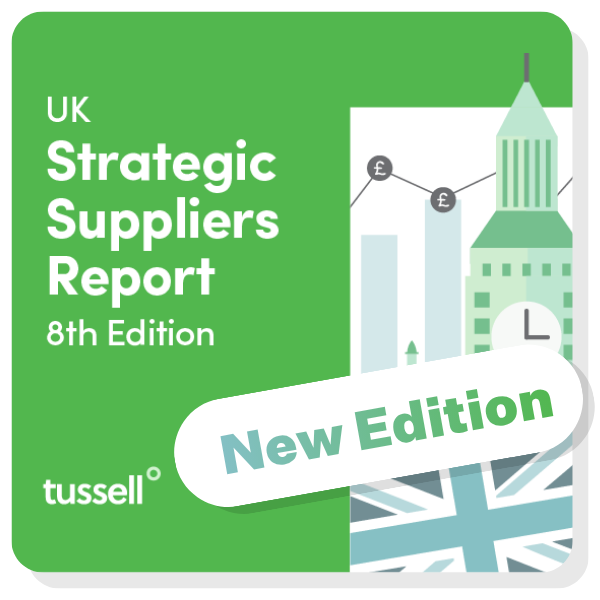On 19th October the government published its long-awaited Net Zero Strategy in the run-up to COP26, setting out the government's long-term plan to achieve carbon neutrality by 2050. The Strategy makes clear the government's determination to "leverage public procurement" towards this goal, harnessing its "buying power to drive decarbonisation".
The Strategy repeats the government's goal of factoring Net Zero more greatly into its procurement mindset, and its desire to see prospective suppliers act more climate consciously. If you're a government supplier - or are hoping to be - the government have a simple message for you: "data on carbon impact, and immediate actions to reduce it, will be increasingly important in how we choose to do business with you".
This blog digs into what is said in the Net Zero Strategy on public procurement, and what lessons you can take to plan ahead.
♻️ "Delivering Net Zero through public procurement"
The bulk of references to public procurement are made under the Strategy's 'Delivering Net Zero through public procurement' subsection of Chapter 4, Supporting the Transition Across the Economy.
Reiterating the ambitions of Transforming Public Procurement green paper, the Strategy sees Net Zero figuring in right from the project design stage of the procurement cycle, becoming a "golden thread" that runs through a tender's creation rather than being bolted on at the end.
To achieve this, the government will turn to three pre-existing policies that affect different stages of the commercial cycle. These are:
PPN 05/21, National Procurement Policy Strategy
Sets out the government's "national strategic priorities" that should figure throughout the procurement process, one of which includes achieving Net Zero.
PPN 06/21, Carbon Reduction Plans
Introduced the need for organisation to include a Carbon Reduction Plan when bidding on contracts valued above £5 million per year. Without a CRP, you face being excluded from bidding on the contract entirely, but they are not currently be used to compare bidders.
To dig deeper into Carbon Reduction Plans, read our blog Carbon Reduction Plans: What you Need to Know!
The Social Value Model
The Model requires - as the Strategy explains - "government to expressly evaluate environmental, social and economic benefits, with these factors comprising a minimum of 10% of the evaluation score for qualifying procurements".
Elsewhere, reference is made to the Industrial Decarbonisation Strategy's proposal to encourage public bodies to procure low carbon products by smoothing their access to market. The Strategy notes plans to launch a call for evidence on defining low carbon products, "a view to the potential introduction of voluntary standards and labeling as early as 2025", and eventually regulatory standards sometime in the late 2020s. These endeavors are also referenced in the Treasury's Net Zero Review.
The Strategy also notes the Innovation Strategy's ambition to see government departments procure in more "innovative ways". Improving "demand-signalling from departments" should allow organisations to offer more innovative - Net Zero conscious - solutions to major projects.
Taken together, the government hopes these policies will make the Net Zero target figure more heavily into the procurement process. Contracting authorities will more proactively integrate Net Zero commitments into their tenders, and will more heavily weigh a bidder's environmental commitments when evaluating them.
Simultaneously, organisations will need to integrate greener practices and carbon reduction efforts into their bids and business model for a better chance of securing awards. Utilising lower-carbon alternatives to products will figure into this especially.
📈 "a platform for even stronger action"
This is not the be-all and end-all of the government's Net Zero plans for procurement, however.
The Strategy emphasises that with the new flexibilities proposed under Transforming Public Procurement, the government will be able to "give even greater consideration to environmental factors in our decision making".
An example provided is "to break the subject matter of contract link [sic] so that a company's wider environmental proposals for the project can be factored into procurement decision". The Strategy also hints at the creation of a "new single unit for all sustainable procurement policy within government to strengthen performance, coordination, and oversight".
The message here is that while the Strategy does not lay out new concrete policies or plans itself, there is an intention to continue integrating climate commitments and thinking into public procurement over the coming decades.
🎯 Conclusion: watch this space
While the Net Zero Strategy introduces little in the way of new policies or plans for public procurement's Net Zero role, it emphasises some key ideas.
For the time being, the three policies listed above - National Strategic Priorities, Carbon Reduction Plans, and the Social Value Model - are the government's main drivers for pushing Net Zero into the procurement process.
Together, they encourage contracting authorities to value Net Zero more heavily, and incentivise suppliers to begin taking concrete action towards quantifying and reducing their carbon emissions. The short of it is that you need to start taking steps to quantify, report and reduce your carbon emissions.
Beyond this, the Strategy also leaves the door open for further policies in the near future, but hints little in the way of what they might look like. Again, taking steps now to understand and reduce your carbon contributions will put you in good sted before new demands emerge.
For suggestions of how can take action now, read our longer analysis Net Zero and UK Public Procurement: What you Need to Know




%20v1.png)


-1.png?width=1280&height=800&name=Copy%20of%20LinkedIn%20+%20Twitter%20Link%20Posts%201200%20x%20628px%20(2)-1.png)
.png?width=80&height=80&name=james%20v2%20(1).png)






